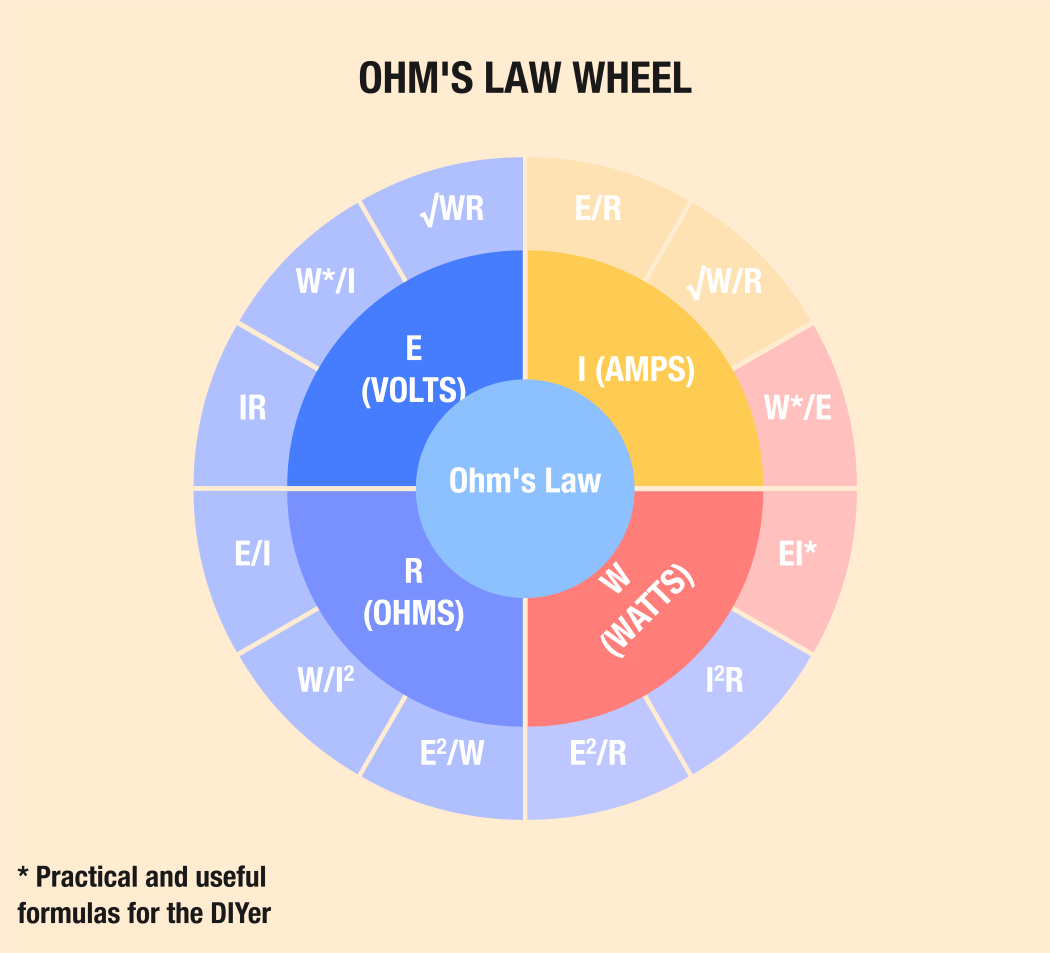Ultimate Guide to Amps, Watts, and Volts With Jackery
Electricity has become a crucial part of our day-to-day life, and imagining living without power seems impossible. As solar energy is a safe, renewable, and clean alternative for homes, many people are investing in solar power stations.
However, it's worth noting the power station's amps, watts, voltage, etc., to ensure it can power appliances for long hours. Jackery Explorer Portable Power Stations are large-capacity solar solutions with high watts, volts, and amps values.

In this guide, we will take a deep dive into electrical terms. We will focus on calculating voltage, watts, amps, etc., and on choosing the ideal-sized power station.
What Are Amps, Watts, And Volts?
When understanding the nitty-gritty of electricity, it's crucial to learn basic electronic terms like amps, watts, voltage, and ohm.
Identifying the watt, ampere, voltage, and ohms for any power station is vital to confirming compatibility with your home or outdoor appliances. On the contrary, powering equipment using a wrong voltage battery is the primary reason for appliance operation failure.
The best part about these basic electrical terms is that they are interrelated and can be calculated using a simple formula. For example, you can calculate the watts an appliance consumes by multiplying amps and volts. Let us discuss how amps, watts, voltage, and ohms differ.
What Is An Amp?
Amperes, commonly called amps, measure the number of electrons flowing through a certain point per second. In other words, it describes the current flow through an electrical circuit.
In mathematical terms, amps are equal to watts divided by volts of a specific appliance.
Formula: Amps = Watts / Volts
If you have the watts and volts of an appliance, you can easily calculate its amps. For example, if the watts and volts of an electric device are 3600W and 240V, respectively, the amps value will be:
Amps = 3600W / 240V = 15A.
Amperage is the strength of the electric current and is expressed in amperes. The larger the amperage, the more electricity can flow through the circuit.
What Is A Watt?
Wattage, commonly known as watts, is the power an electric appliance consumes. In other words, it is defined as the "electricity at work" or power a device takes to run.
In mathematical terms, watts are equal to the multiplication of amps and volts.
Formula: Watts = Amps × Volts
For instance, if an electric device uses 10 amps and 240 volts, the wattage will be:
Watts = 10 amps × 240 volts = 2400W.
The higher the wattage, the more the output and power of the appliance.
What Is A Volt?
Volt measures the force or pressure required for an electric current to flow past a wire. In other words, it also determines the speed at which individual electrons flow through the circuit.
Large home appliances like washing machines, refrigerators, and air conditioners operate at 240V. On the contrary, smaller devices like computers, TVs, light bulbs, etc., operate at 120V.
In mathematical terms, volts are equal to the watts of an appliance divided by its amps.
Formula: Volts = Watts / Amps
If the appliance consumes 500 watts and 25 amps, the volts can be calculated as:
Volts = 500W / 25A = 20V
What Is An Ohm?
The resistance inherent in an electric wire encountered by the electrons while flowing from high to low is called ohm.
In other words, it is the electrical resistance between two points of a conductor. When one volt of constant potential difference is applied to these points and produces a current of one ampere, the natural resistance equals one ohm.
Formula: Ohm = Volts / Amps
Or, Ω = V / A
For example, if there is 240V and 12A, the natural resistance of the conductor will be:
Ω = 240V / 12A = 20 Ω
Amps, Watts, And Volts Relations
Electrical mathematics may seem overwhelming at first. But it's pretty simple once you dig deep. One of the simplest ways to understand the relation between amps, watts, and voltage is Ohm's Wheel Law.

Let's take an example to help you understand how to use the wheel. Say you want to install an AC at your home and finalize a 4000-watt AC for your space. Now you want to determine the circuit required for AC to work efficiently.
In this case, we suppose the AC is rated at 4000 watts and must be supplied with 240 volts. As we already have watts and volts, we need to calculate amps or intensity of current (represented by I).
Now, choose the formula from Ohm's Wheel Law image.
I = W / E
Or, Amps = Watts ÷ Volts
Substitute the values:
Amps = 4000W ÷ 240V = 16.6 A.
As the AC will operate for 3 or 4 hours on a hot summer day, we apply a safety factor of 125%.
Amps = 16.6 × 1.25 = 20.8 amps.
That's it. A standard 25-amp circuit would supply stable and continuous electricity to the AC.
Voltage, Current, and Resistance
Let us understand how voltage (V), current (I), and resistance (R) relate to each other.
According to Ohm's law, they are related as follows:
V = I × R
Where,
V = Voltage (volts)
I = Current (amps)
R = Resistance (ohms)
That means increasing the voltage will directly increase the resistance when the current remains the same.
Note: Resistance works opposite to current. When the resistance is increased by keeping the same voltage, the current flowing through the circuit eventually decreases.
Power, Current, and Voltage
Now that you know how resistance, current, and voltage are related, here is a simple equation that connects power, current, and voltage.
P = V × I
Where,
P = Power (watts)
V = Voltage (volts)
I = Current (amps)
If you want to increase the power, consider increasing either current or voltage.
Amps, Watts, And Volts Formulas
Now that you know the basics of wattage, amps, volts, and ohms, here are a few easy formulas to remember.
Amps Formulas:
The current (in amps) equals the voltage (in volts) divided by the resistance (in ohms).
I = V ÷ R
The current (in amps) equals the power (in watts) divided by the voltage (in volts).
I = W ÷ V
The current (in amps) equals the square root of power (in watts) divided by the resistance (in ohms).
I² = W ÷ R
Or, I =
Watts Formulas:
The power (in watts) equals the voltage (in volts) times the current (in amps).
W = V × I
The power (in watts) equals the square of voltage (in volts) divided by resistance (in ohms)
W = V² ÷ R
The power (in watts) equals the square of current (in amps) times the resistance (in ohms).
W = I² × R
Volts Formulas:
The voltage (in volts) equals the current (in amps) times the resistance (in ohms).
V = I × R
The voltage (in volts) equals the power (in watts) divided by the current (in amps).
V = W ÷ I
The voltage (in volts) equals the square root of power (in watts) times the resistance (in ohms).

Understand Amps, Watts, And Volts In the Electrical System
Besides watt, ampere, voltage, and ohms, there are a few additional electrical terms. Let us explain them briefly.
Atoms: They are known as the building blocks of matter that consist of a nucleus with protons and neutrons. It is surrounded by negatively charged electrons, resembling a mini solar system. Similar to atoms, the electrical system is made of matter.
Electrons: Unlike planets that move slowly, electrons move around the nucleus at the speed of light. The moving path of electrons is called a probability cloud.
Electricity: Atoms grouped together are called molecules. Both atoms and molecules located closely can easily pass electrons from one atom to another. This is the same case when electrons flow through a conductor.
Connecting your electrical equipment with the wrong voltage or power supply can cause appliance failure. That's why calculating the electrical ratings is essential before investing in a solar system or an electrical battery.
The Electrical Efficiency
In an electrical system, power (measured in watts) equals the voltage multiplied by the current. Electrical efficiency means powering the same device using less energy. When you have an efficient electrical system, it means there is less waste of energy.
Suppose you are using a 12-volt battery and a 12V light bulb. You need 240 watts of power to light the bulb. Let us apply Ohm's Law to calculate the amps.
I = W ÷ V = 240W ÷ 12V = 20 amps.
Now let us say you have a 24-volt battery and a 24-volt light bulb to get the same amount of power, i.e., 240 watts.
I = W ÷ V = 240W ÷ 24V = 10 amps.
Resistance, in this case, will be 2.4 ohms.
Upon evaluating currents in the two scenarios, the latter system produces the same power using half the current. This means the second electrical system is more efficient.
Jackery Power Stations Explained
While selecting the right power station, it's vital to note its amps, watts, and volts. The battery with higher watts can charge appliances for long hours, while high amperes mean it will charge your device faster.
Jackery is a renowned solar generator manufacturer offering high-quality portable power stations in different sizes. The portable, durable, and safe power stations are suitable for off-grid living, road trips, or camping.
Jackery Explorer 2000 Pro Portable Power Station
The fast-charging solar power system can power 96% of most home appliances. Jackery SolarSaga Solar Panels can charge the power station in a few hours.

|
Power Station |
Capacity |
Recharging Time |
Ports |
Appliances |
|
Jackery Explorer 2000 Pro |
Lithium-ion 50Ah/43.2V (2160Wh) |
AC Adapter: 2H 12V Car Adapter: 24H 6x SolarSaga 200W Solar Panel: 2.5H 4x SolarSaga 200W Solar Panel: 4H 2x SolarSaga 200W Solar Panel: 7.5H
|
AC Output: 120V, 60Hz, 2200W (4400W Peak) USB-A Output: Quick Charge 3.0, 18W Max USB-C Output: 100W Max, (5V, 9V, 12V, 15V, 20V up to 5A) Car Output: 12V, 10A AC Input: 120V, 60Hz, 15A Max DC Input: 11V-17.5V, 8A Max, Double to 8A Max. 17.5V-60V, 12A, Double to 24A/1400W Max. |
Blender (300W) = 6H Air Conditioner (1150W) = 1.5H Blender (300W) = 6H Coffee Maker (1150W) = 1.5H Microwave (1160W) = 1.5H Electric Grill (1600W) = 1.1H Mini Cooler (90W) = 20H Refrigerator (520W) = 3.5H Projector (100W) = 18H
|
Jackery Explorer 1500 Pro Portable Power Station
Homeowners looking for a solar solution that can charge 95% of essential home appliances can choose Jackery Explorer 1500 Pro Portable Power Station.

|
Power Station |
Capacity |
Recharging Time |
Ports |
Appliances |
|
Jackery Explorer 1500 Pro |
Lithium-ion Battery 43.2V/35Ah (1512Wh) |
AC Adapter: 2H 12V Car Adapter: 16.5H 1x SolarSaga 200W Solar Panel: 9H 2x SolarSaga 200W Solar Panel: 5H 6x SolarSaga 200W Solar Panel: 2H |
AC Output: 120V, 60Hz, 1800W (3600W Peak) USB-A Output: Quick Charge 3.0, 18W Max USB-C Output: 100W Max, (5V, 9V, 12V, 15V, 20V up to 5A) Car Port: 12V,10A AC Input: 120V, 60Hz, 10.83A Max DC Input: 11V-17.5V, 8A Max, Double to 8A Max 17.5V-60V, 12A, Double to 24A/1400W Max |
Ice Shaver (700W) = 1.8H Hand Drill (400 - 800W) = 1-3H Lamp (5W) = 257W Mini Fridge (90W) = 14H Bluetooth Speaker (10W) = 128H Microwave Oven (1000W) = 1.2H Blower (400 - 700W) = 1-3H Coffee Maker (1120W) = 1.1H TV (60W) = 21H |
Jackery Explorer 1000 Pro Portable Power Station
The Jackery Explorer 1000 Pro can charge 93% of home appliances. As a result, it can be your ideal pick to power essential home appliances during short road trips.

|
Power Station |
Capacity |
Recharging Time |
Ports |
Appliances |
|
Jackery Explorer 1000 Pro |
Lithium-ion Battery 43.2V 23.2Ah (1002Wh)
|
AC Adapter: 1.8H 12V Car Adapter: 12H 2x SolarSaga 200W Solar Panel: 9H 4x SolarSaga 200W Solar Panel: 1.8H
|
AC Output: 120V, 60Hz, 1000W (2000W Peak) USB-A Output: Quick Charge 3.0, 18W Max USB-C Output: 5V-20V, 3A-5A Car Port: 12V,10A AC Input: 120V, 60 Hz, 15A Max DC Input: 12V-17.5V (Working Voltage) ⎓ 8A Max, Double to 16A Max; 17.5V-60V (Working Voltage) ⎓ 11A, Double to 22A/800W Max |
Ice Shaver (700W) = 1.2H Hand Drill (400 - 800W) = 2H Lamp (5W) = 170W Mini Fridge (90W) = 9.4H Bluetooth Speaker (10W) = 85H Microwave Oven (1000W) = 51 Min Blower (400 - 700W) = 1-2H Coffee Maker (1120W) = 45 Min TV (60W) = 14H |
Amps, Watts, And Volts FAQs
How many amps are in 10 watts at 120 volts?
You can calculate the amps by dividing the given watts by volts.
Amps = Watts ÷ Volts = 10W ÷ 120V = 0.083A
Here we have a few more ampere calculations with different power and volts.
|
Power (W) |
Voltage (V) |
Current (A) |
|
10 Watts |
120 Volts |
0.0833 amps |
|
20 Watts |
120 Volts |
0.167 amps |
|
30 Watts |
120 Volts |
0.250 amps |
|
40 Watts |
120 Volts |
0.333 amps |
|
50 Watts |
120 Volts |
0.417 amps |
|
60 Watts |
120 Volts |
0.500 amps |
|
70 Watts |
120 Volts |
0.583 amps |
Does higher watts mean more power?
In short, yes. As watts represent the rate at which energy is used or transferred, it is directly related to power. The higher the watts of a battery capacity, the more power.
What are the differences between amps, watts, and volts? Is watts stronger than volts?
Here is a brief definition of wattage, amps, volts, etc.
- Amps measure the electrical current or the speed at which electrons flow through a conductor.
- Volts measure the electrical voltage and represent the difference in electrical potential.
- Watts is the rate at which electrical energy is transferred in a circuit.
Watts measure power, while volts represent electrical potential. That being said, the energy used or transferred is calculated in watts. Therefore, watts are stronger than volts.
Final Thoughts
Knowing the current flowing the load is vital in choosing the best wire. The amps, watts, voltage, and ohms formulas are also helpful in calculating the size of the solar inverter and total power consumption. Once you know how much power your appliances consume, you can easily calculate the portable power station size.
Depending on your power needs, you can choose Jackery Explorer Portable Power Stations, available in different sizes.


























































































